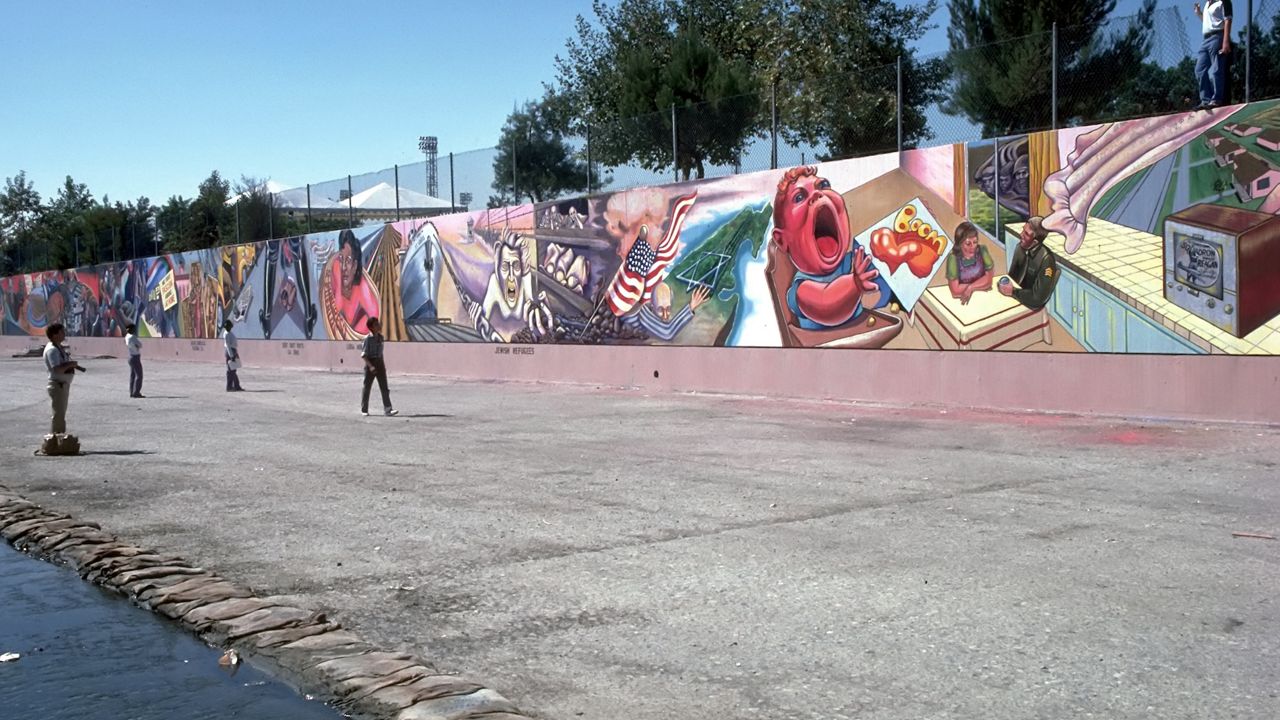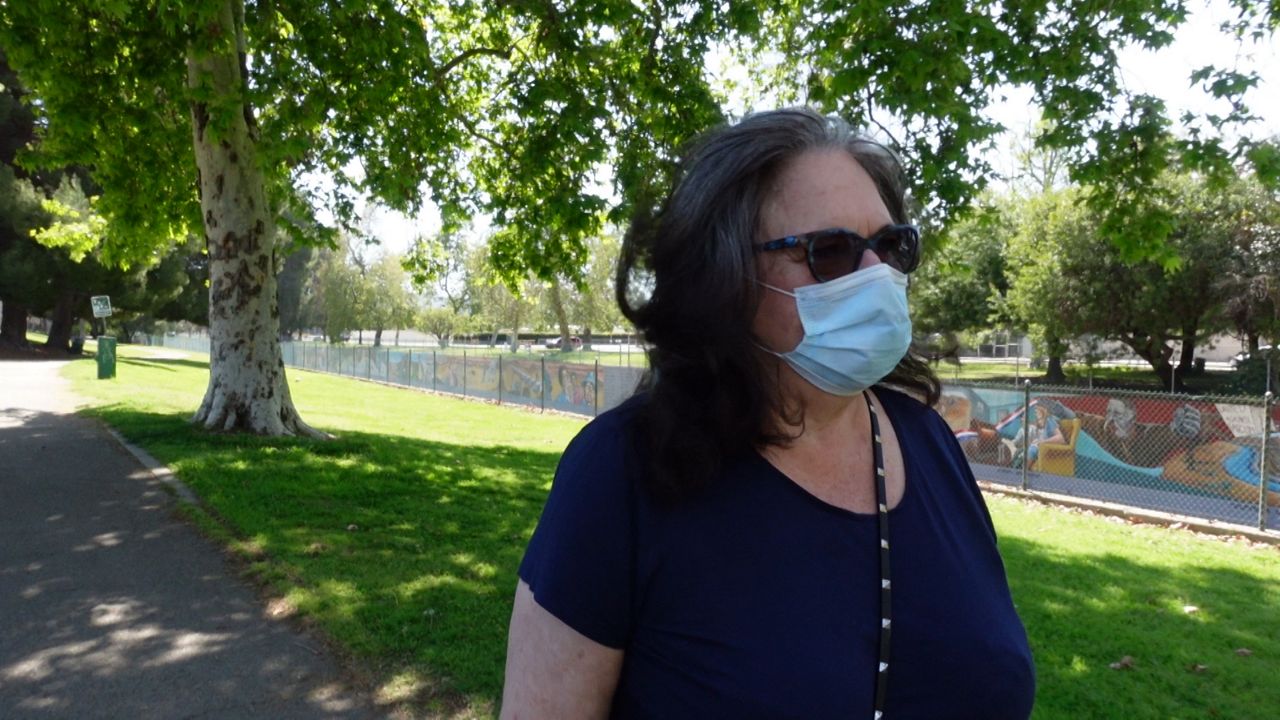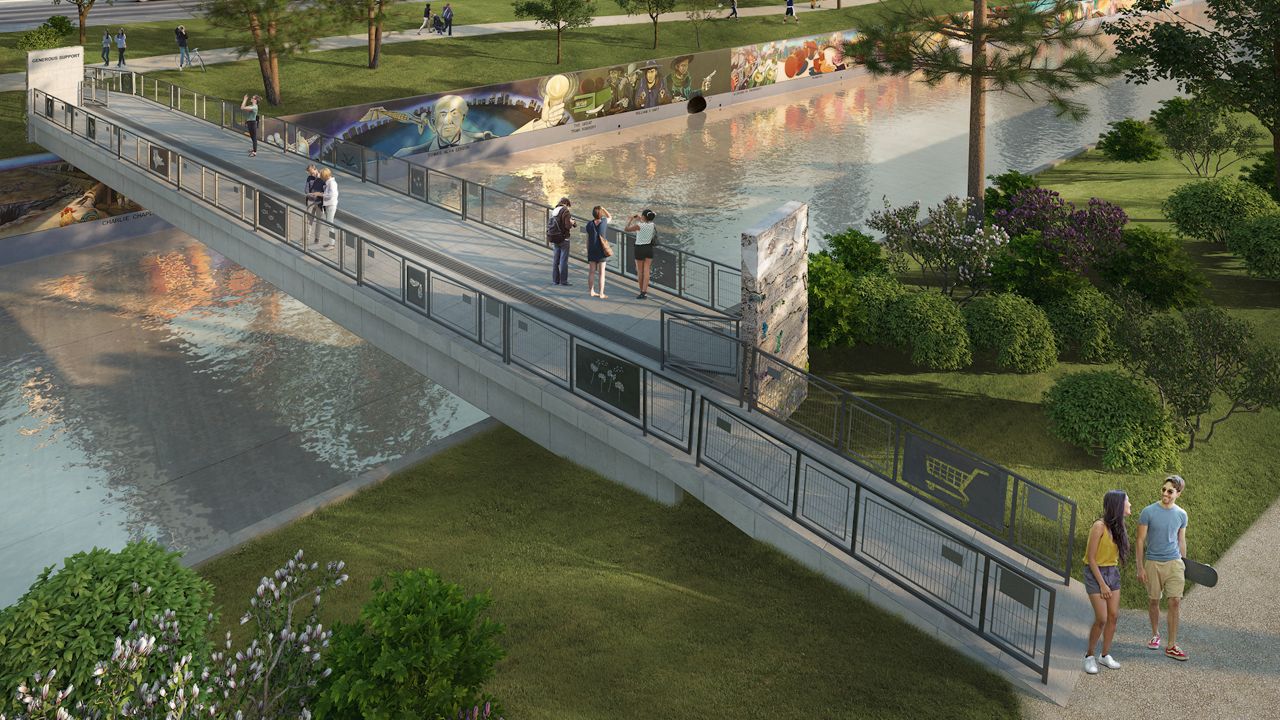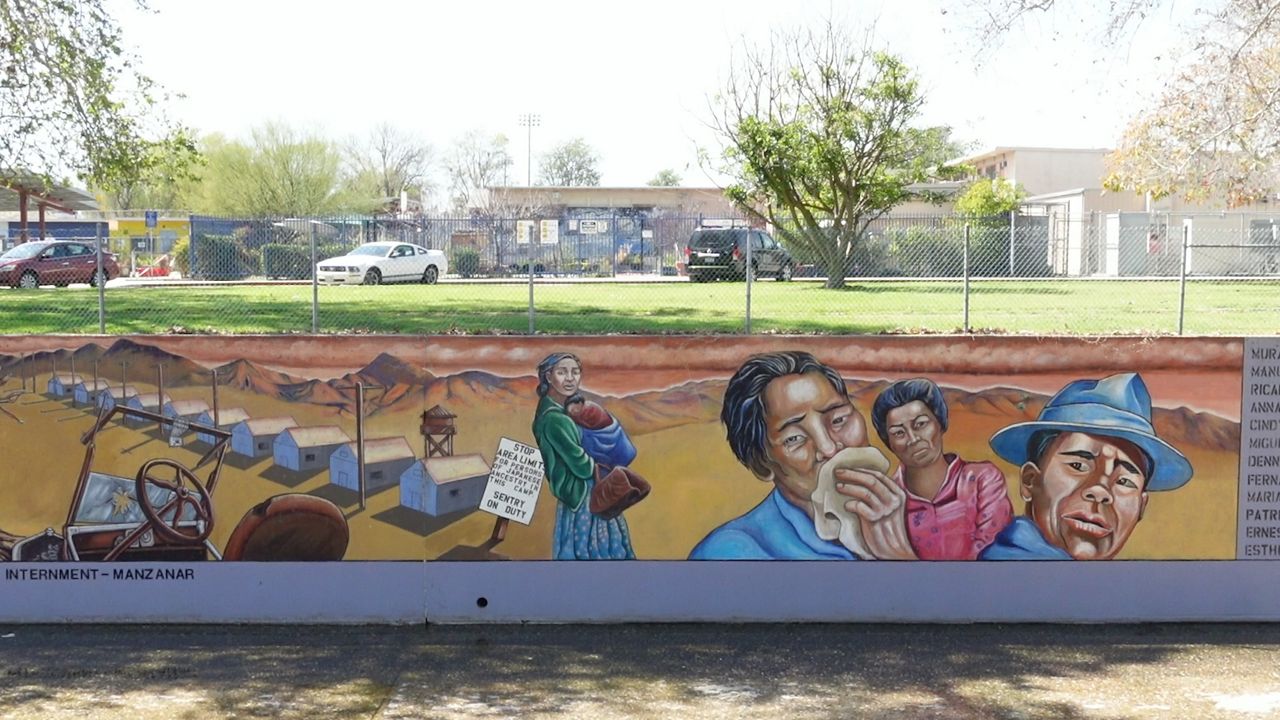LOS ANGELES — If you’re a fan of California history, you may consider taking a walk down the Tujunga Greenbelt along Coldwater Canyon in Valley Village.
“The Great Wall of Los Angeles” is a mural designed by artist Judy Baca with the help of over 400 community youths and artists. Now a National Historic Site, it’s an artwork that reads like a history book.
“The Great Wall is a narrative work,” said Baca. “It’s a work after the tradition of Los Tres Grandes, the great Mexican muralists of the 20th Century. And that’s where I trained. And the notion was that we can bring the story back to the people.”
Officially called “The History of California,” the mural depicts imagery from prehistoric times all the way to the 1950s. Started in 1974, the Army Corps of Engineers needed a beautification project to help ease tensions created by a flood control channel that physically divided the community.
Baca, therefore, collected historical stories often left out of history books and worked on accurately depicting indigenous, women and communities of color.

“As we were working on this, I was saying, 'What do the dust bowl refugees and the Japanese people going into the internment have in common?'” said Baca. “One of the kids said they have laundry. They have laundry in common.”

The mural, which spans half a mile, is painted along one side of the channel and now Baca will get to expand "The Great Wall" to the other side with the help of a $5 million grant from the Mellon Foundation. With plans to depict the 1960s to the present day, future designs include a bridge, visitor resources and enhanced community engagement.

Dr. Luz Martin del Campo remembers working on “The Great Wall” back when she was 17 years old.
“We weren’t part of the book history and if we were part of the history, it was very one-dimensional,” said del Campo. “And what was being depicted in the mural was everything far from that. It presented all parts of history, the good, bad and ugly, but the real.”
The Lucas Museum of Narrative Art recently acquired the archives documenting the creation of the mural where they’ll be preserved for future generations. Fifty years later, Baca never expected to still be working on the “The Great Wall,” but it’s a project that grew bigger than her.

“I think one of the most important things to do in a time in which we have a divided nation and in which we struggle to actually communicate with each other in a meaningful way," said Baca. "The arts are a perfect way to do that. They actually in a sense from spirit to spirit, from soul to soul.”
Adding visual context to neglected personal stories, Baca's work not only preserves California history, but enriches it all in an effort to create better understanding.



